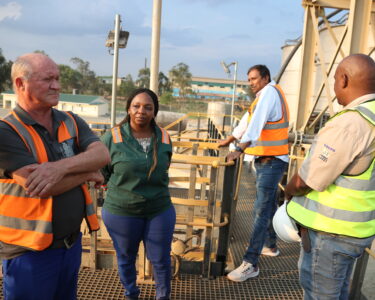The management at Murowa Diamonds, officially known as RZM Murowa, was visibly excited and brimming with optimism during a recent visit by the Brick by Brick magazine team. The broad smiles on their faces and the way they spoke ad infinitum about new developments at the mine were clear testimony that the good times were beckoning in Zimbabwe’s mining sector. Everyone at Murowa has every reason to be buoyant because the new 500-tonne per hour (tph) Project Crown Jewel has already started paying dividends amid reports that production had surged 24% during the third quarter of 2022. The mammoth processing plant, which allows the company to process all of its ore on-site, including low-grade ore and re-crushing stockpiles, was constructed at a cost of about US$70 million. Project Crown Jewel is part of a US$450 million expansion project being undertaken by RZM Murowa to extend the mine’s lifespan by shifting to underground mining. The top brass were so excited about the “jewel” in the RZM Murowa “crown” they were prepared to “hold hostage” the Brick by Brick magazine team for more than three hours to help them get “a feel” of the new plant. As our Editor-in-Chief Munyaradzi Huni reports, the tour (or is it the “hostage situation”?) was enough to hammer home the point that, indeed, government will meet its US$12 billion mining target by 2023. In fact, the intimidating size of the plant alone makes one wonder if the Ministry of Mines and Mining Development was not overly conservative when it came up with the US$12 billion figure.
‘’There is more to RZM Murowa than diamonds”
The “hostage situation” began in the company’s boardroom with a presentation titled “More than Diamonds” by the acting manager (health, safety, environment and quality), Freeman Mutara, who was standing in for the general manager, Jonathan Mapisaunga. The presentation covered the company’s history as well as its profile and an overview of the expansion programme currently underway. Also in the boardroom to ensure that there were lighter moments to the “hostage situation” were the human resources superintendent, Munyaradzi Mungaraza, and the communications and external relations advisor, Tsitsi Tererayi Taruvinga.
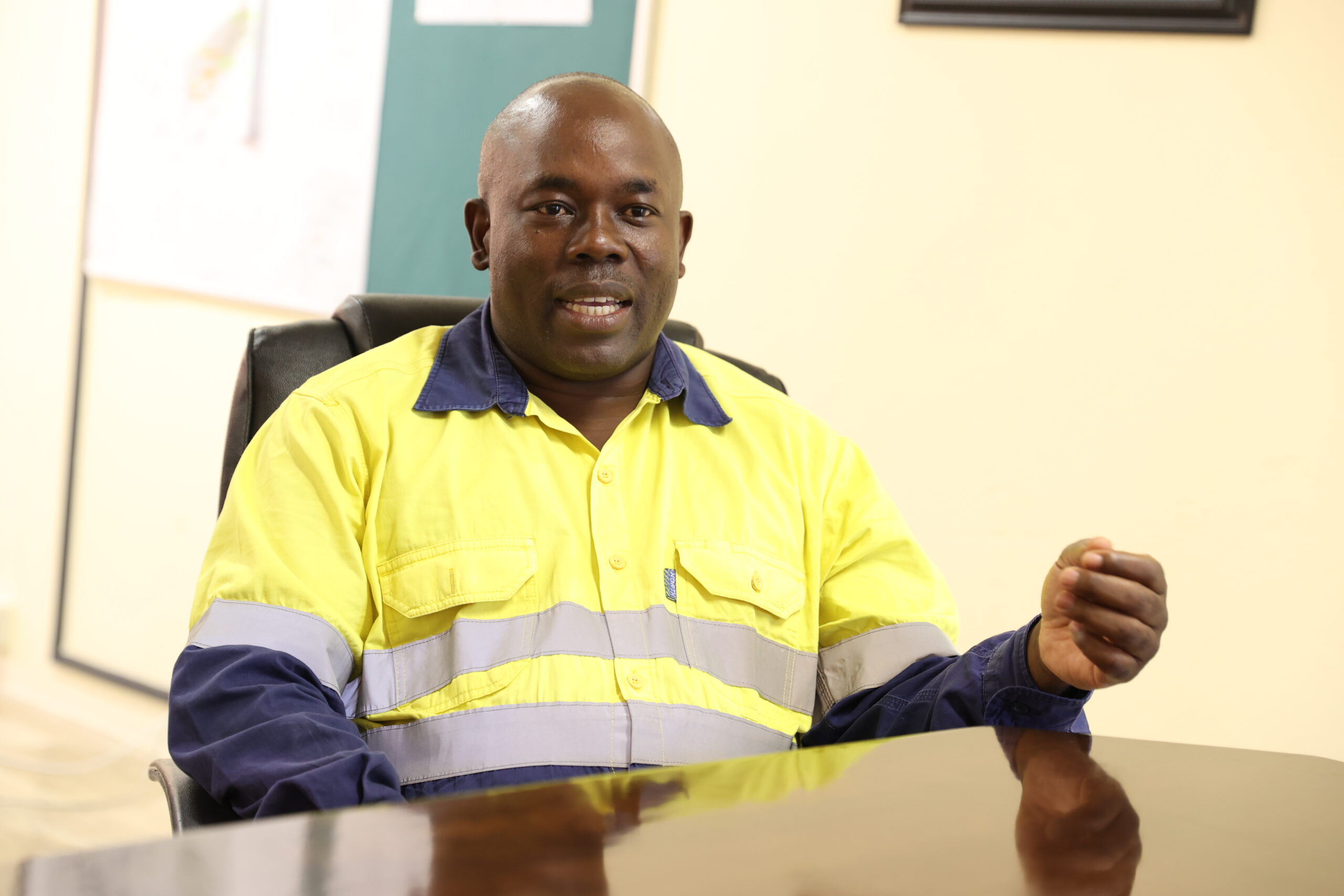
A summary of Mutara’s presentation follows: “Briefly, Murowa Diamonds is a member of the RioZim Group. We are in the business of exploring, finding and processing diamond-bearing ores for the benefit of the business, the employees, the community and the country as a whole. “In 1997, kimberlite pipes were discovered by the previous owner – Rio Tinto. Three significant kimberlite deposits were discovered in the area where the mine is now situated. In actual fact, exploration works started much earlier than 1997. A total of 141 families were, unfortunately, displaced by the discovery of diamonds at Murowa. They were subsequently relocated to Shashe in Masvingo where the company y secured alternative land for their resettlement. Construction and mining started around 2004 when we recovered our first diamonds. We have been continuously mining diamonds since then. “Our total workforce is 1,538 of whom 45% are drawn from the local community while 21% are women. The number of women employees is quite high considering the fact that the mining industry traditionally employs more men than women. Our goal is to empower as many women as possible at Murowa Diamonds. “Staff development is one of our key core values. This is evidenced by the fact that some of our employees were recruited initially as general hands on account of their lack of relevant skills or qualifications. But, over the years, they have undergone extensive in-house on[1]the-job training. The majority of them are now skilled enough to work on the new 500tph Crown Jewel, some as artisans and others as supervisors,” said Mutara. In addition, Mutara spoke about the company’s corporate social responsibility (CSR) programme, which he explained was anchored on five pillars – health, education, economic empowerment, infrastructure development and food security. Examples of CSR projects implemented by Murowa Diamonds to date include building over 40 classroom blocks, a bursary scheme for about 125 learners, the construction of a state-of-the-art medical centre, free eye cataract operations for members of the community, drilling boreholes, electrifying clinics and schools, working with small- to medium-scale entrepreneurs, and building vocational training centres and factory shells. “We work with five communities within our hinterland. These programmes are positively impacting approximately 50,000 people. Our CSR philosophy is built on long-term sustainability as opposed to the short term relief,” said Mutara.
Due to time constraints, Mutara was only able to give a glimpse into the company’s health and safety department, which he heads. It is affectionately known within company circles as the “department of excellence”. By the Brick by Brick magazine team’s own assessment, this accolade seemed to be an understatement. “Excellency” was visible from the moment we entered the company gate, right up to the medical centre, boardroom and new plant.
And now to the crux of the matter
The preliminaries over, Mutara moved to the next stage of his presentation, the crux of the matter, as it were. “In terms of our resource, we have three major pipes – K1, K2 and K3. K1 has a surface area of about four hectares, but has been mined to a depth of about 160 metres. Beyond that we need to develop an underground operation. This also applies to K2. We have also mined this pipe to a depth of about 250 metres after which we will have to go underground. We are already in the process of engaging experts to undertake feasibility studies to ensure that in four years’ time, we will be in a position to establish an underground operation. “We are also processing ore from our stockpiles. This refers to the ore that was previously classified as low grade due to the small size of our original plant, whose capacity was 170 tonnes per hour. We set aside this low-grade ore in anticipation of the economies of scale made possible by a bigger plant, which we now have. As these are the stockpiles are quite substantial, we expect to be processing them for the next four years, at least. “We were forced to scale down operations due to the Covid-19-induced lockdowns. But, I am happy to say things are picking up. Thanks to the Crown Jewel, we have since increased our ore processing capacity to 500 tonnes per hour, meaning our cost of production has gone down. Even though the ore is low-grade, we are still able to make a profit because of the new plant’s improved economies of scale. Since our stockpiles will not last forever, underground mining is now our key priority area going forward. “In terms of carats, our production figures dipped from 2016-2020. The company produced 568,222 carats in 2020, but production went down to 431,000 carats and 374,000 carats in 2021 and 2022 respectively. The Crown Jewel is expected to boost production over the next three to four years because it is a juggernaut with a capacity to process an average of 3 million tonnes of ore per annum. That’s a lot of feed (ore). Our plans are to increase production to more than 1 million car[1]ats per year by 2025. “Besides that, we are also conducting further exploration around our leases in another bid to extend the mine’s lifespan. There are areas that are of interest to us. But we require additional funding to continue exploration that will confirm that the deposits there are viable enough for us to go into full[1]scale mining. “Eighty percent of the stones or diamonds that we produce at Murowa are gem quality. In other words, they are classified as gemstones. The balance – plus/minus 20% — are semi-industrial to industrial stones. The gemstones fetch good prices on the market while the semi-industrial and industrial stones sell for less. However, before we sell our diamonds, they undergo an acid-based cleaning process on-site to boost their market value. This cleaning and polishing process adds approximately 2 percent to the value. “In terms of valuation, we are guided by the Minerals Marketing Corporation of Zimbabwe (MMCZ), the statutory body with the sole mandate of marketing diamonds. The MMCZ assist us in valuation for export purposes. Ten percent of the diamonds earmarked for the export market are extracted from our parcels reserved for the local market. If no one shows interest in the 10 percent, in the next parcel the gemstones are rolled back and sold overseas, especially in Antwerp, Belgium, the biggest diamond market in the world. “On-site, we conduct our operations under the watchful eye of the ZRP Minerals, Flora and Fauna Unit, who also accompany the diamonds to the MMCZ offices in Harare. We are very transparent in our operations, from mining, sorting to marketing,” added Mutara. Enter Mapisaunga, the general manager, who picked up from where Matara left off. “Murowa Diamonds requires about US$450 million to set up an underground mining operation. The figure still needs to be fine-tuned, though. The new 500tph plant gobbled about US$70 million. However, going forward, there are additional projects like the power[1]line from Zvishavane, which will cost about US$8 million. We are also embarking on a 15-megawatt solar project, which will be constructed in phases starting with 8MW in 2023. “We started building this new plant in 2019. However, progress was disrupted by the Covid-19 pandemic and associated lockdowns, especially with regard to imports of critical components sourced from different parts of the globe,” said Mapisaunga. The youthful Mapisaunga, whose motto is “more action and less talk”, applauded government’s decision requiring mining companies to pay 50% their royalties in cash and the other half in processed minerals. Accorded national project status, the US$450 million Murowa Diamonds expansion is an additional feather in the cap for the Second Republic’s en[1]gagement and re-engagement policy. From the boardroom, the Brick by Brick magazine team was taken on a guided tour of the 500tph Crown Jew[1]el led by the plant manager, Dzapasi Mashizha, under the eagle eye of the no-nonsense security officer, Collin Magaya. The security protocols at Murowa Diamonds took the “hostage situation” to a whole new level. And who can blame the powers-that-be for leaving no stone unturned? After all, all it takes is for the daring thief to swallow a diamond ‘particle’ and leave the mine undetected in the absence of such strict protocols. As the mean-looking Magaya put it: “The only person who does not go through these security protocols is the President of the country.”
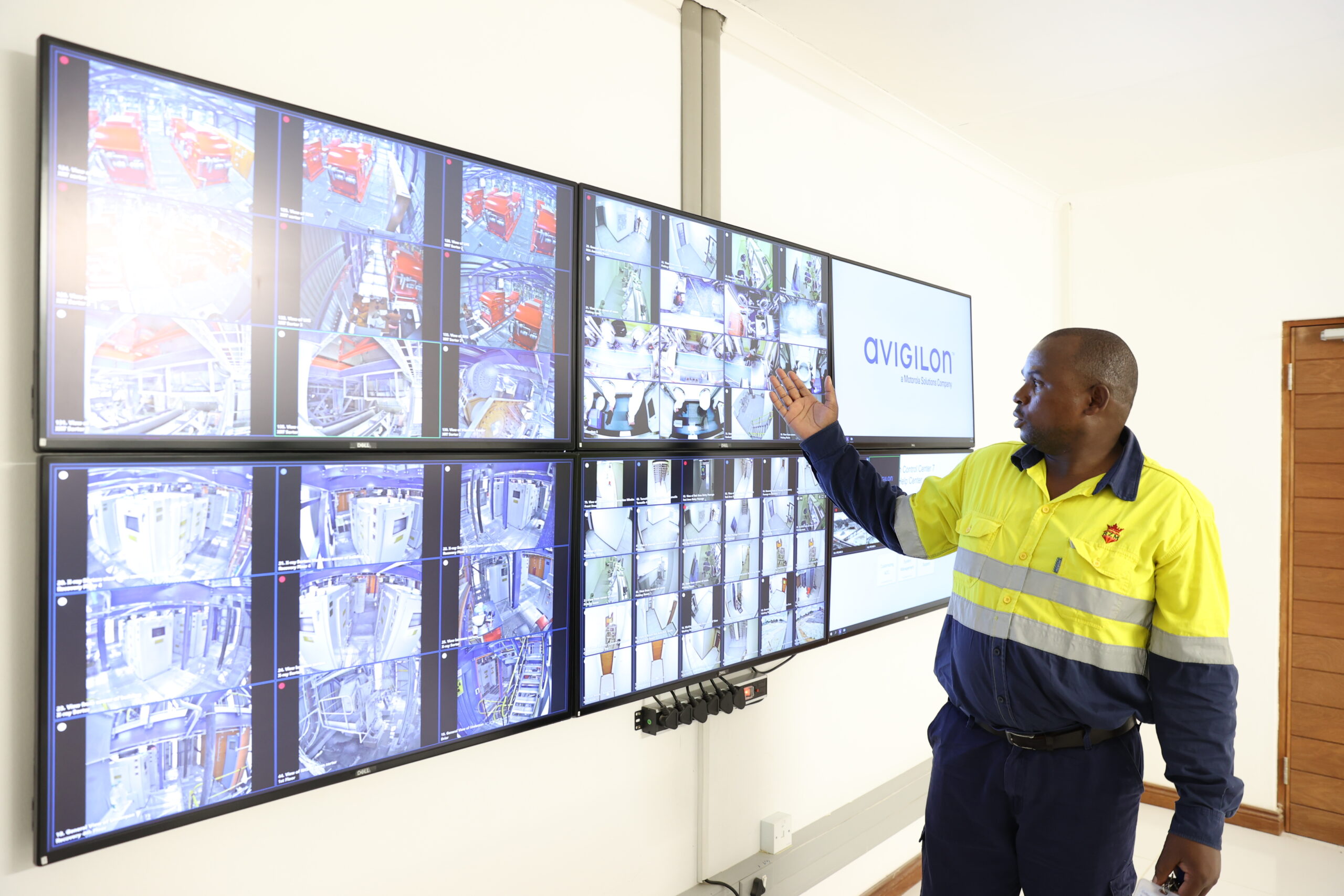
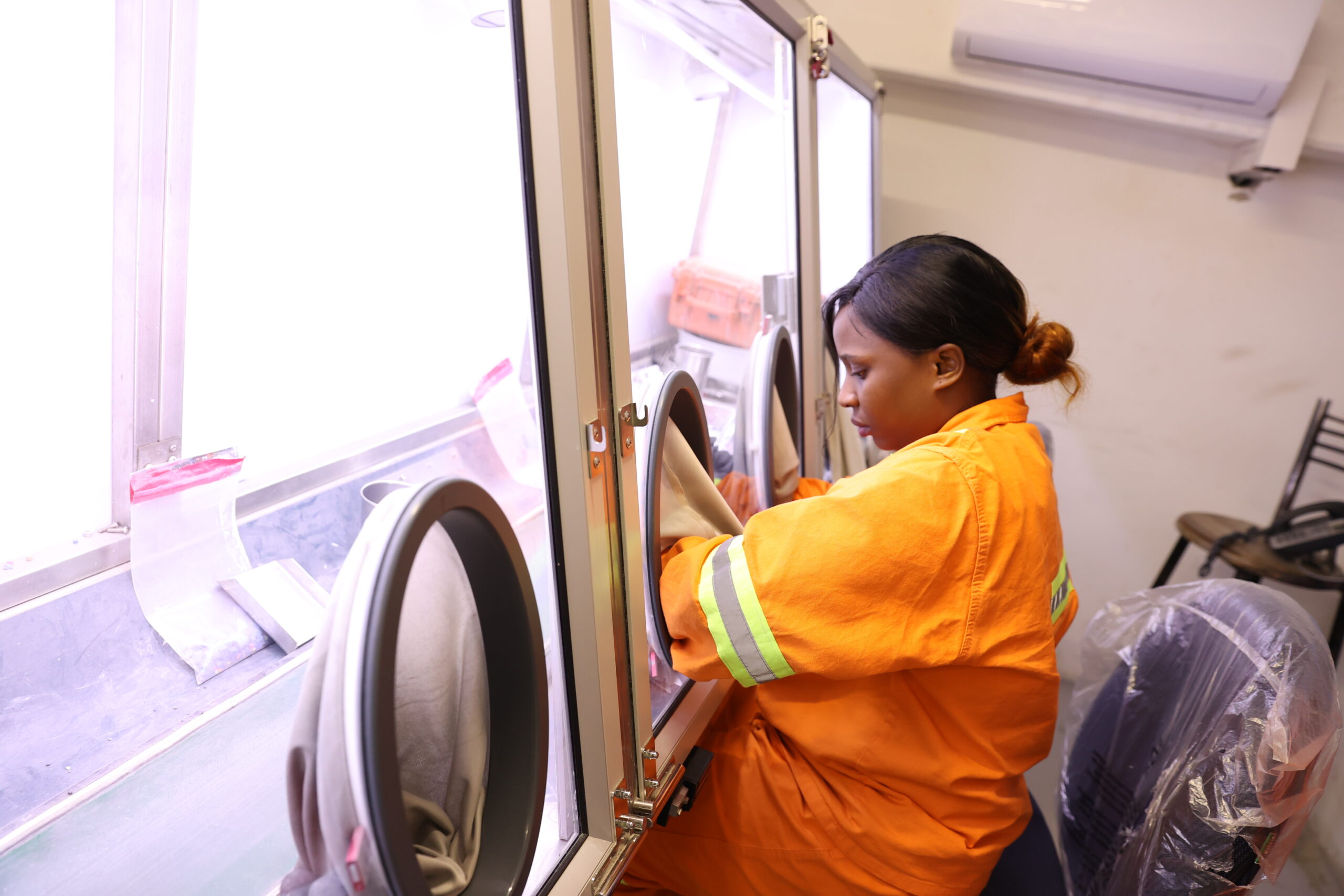
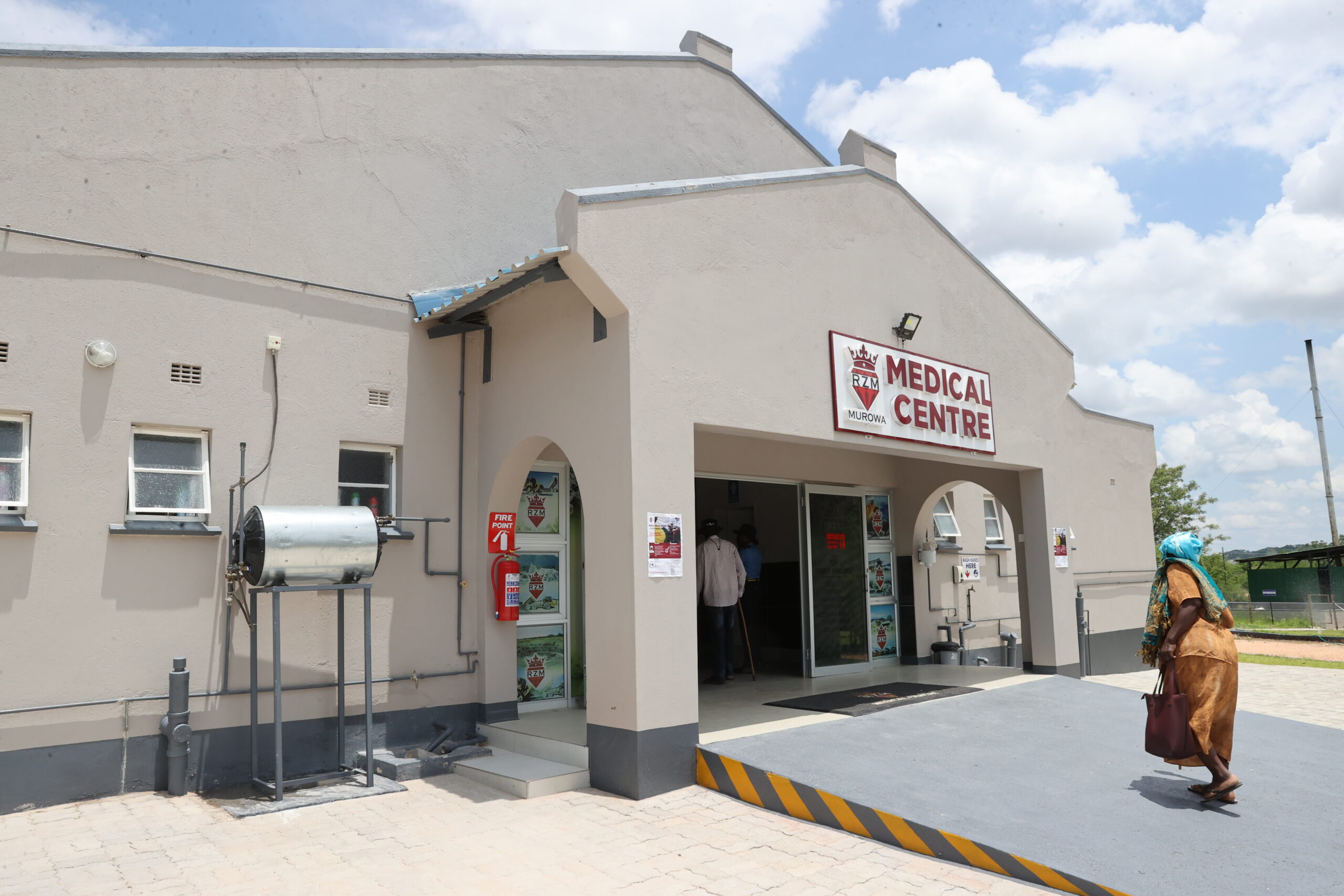
Inside the Project Crown Jewel

Murowa Diamonds’ new 500tph Crown Jewel will see the company processing all ore sources on site, namely K1, K2, K3, low-grade and re-crush stockpiles to maximise diamond recovery. Expectations are that the plant will help sustain business operations for the foreseeable future and for the benefit of both shareholders and stakeholders. The new plant boasts five CDX Modrup Debtech 2021 X-ray machines, with four being primary double pass sorters and one being a re-concentration sorter. These five Debtech machines are the first of their kind in Zimbabwe. It was time for Mashizha to demonstrate his expert knowledge: “These machines are regarded as the Rolls-Royce of diamond sorting equipment not only for their efficiency but for their capacity and quality of product. The re-concentration sorter further reduces the concentrate to a clean and manageable diamond-sort feed. “The plant also has two 2022 Kawasaki cone crushers that are required to be the best sorters on the diamond market. They are water flushed and have grooved liners. Metallurgists will tell you that to ensure a stone has high value, recover it as is and yes with grooved liners, these crushers minimise/reduce diamond breakage. These two crushers are the first of their kind in Zimbabwe’s history and one of the very few in Southern Africa. “In addition, the plant has two Tecroq Vertical Shaft Impact Crushers that are also said to be the first in the country. The crushers combine efficiency, power consumption and recovery of fine diamonds. They ensure that what is regarded as tailings from the new plant are of no value anymore. “The plant has three X-Ray Trans[1]mission Technology (XRTs) machines – all 2022 models. This is considered the best sorter on the market that recovers large diamonds using X-ray transmission technology. The plant also has Osborn Jaw Crushers that are considered as the ‘buffalo’ of crushers in the mining industry for their robust[1]ness and fitness for purpose. “Lastly, the plant has a thickener, which comes with 2022 technology. The thickener has a massive holding capacity of 1,500,000 litres of process water and is larger than the average household swimming pool. “During construction, about 1,000 tonnes of steel and 6,500 cubes of concrete gave birth to this massive processing plant, all supplied locally. A total of 5,000 tonnes of steel were erected, giving birth to arguably one of Zimbabwe’s finest and biggest processing plants. The plant has nine stockpile tunnels, similar to those found on a bridge.”
Tour of medical centre marks end of the “hostage situation”
There is, indeed, more to Murowa than just diamonds as Mutara alluded to in his presentation. Our tour of the Murowa Diamonds plant took no less than two hours. And just when we thought the “hostage situation” was over, Mungaraza and Taruvinga invited us on a short tour of the new medical centre, built close to the mine entrance. Equipped with world-class medical equipment that includes an ambulance, a MARS 40 X-ray machine, Mindray Ultrasound Machine, Spirometer, Audiometer and Visual Acuity Tester, among others, the medical centre is a shining beacon. Access to the state of-the-art facility is, however, not limited to mine staff, as its doors are also open to the surrounding community. “More than 1,000 community members have been treated here since March 2022,” says Mungaraza. As we left Murowa Diamonds, we probably became the first “hostages” to be freed unharmed but armed with encyclopedic knowledge on Zimbabwe’s lucrative diamond mining industry. Needless to say, we enjoyed our “hostage situation” so much that, given half a chance, we will go back again, and again. What a life-changing experience!



